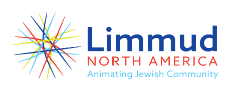One of the most significant and influential events of the last 1000 years of Jewish history was the rise of the printing press. Jewish books of many kinds were amongst the hundreds of editions published in the first cen- tury of printing. This had a huge influence on both Jewish and non-Jewish access to our Torah.
Daniel Bomberg, a wealthy, non-jewish, entrepreneur funded the publication of hebrew texts from his pub- lishing house in 16th Century Venice. In order to prevent texts being printed with errors, editors were hired to research manuscripts, scrolls and codices to determine the best version of the text to print. Their goal was always to ‘fix’ the text to create the ‘perfect’ version of the text Moses had received on Sinai.
Several editions of the Hebrew books printed in Venice in the thirty years between 1517 and 1546 reflect the dynamism of this project using one specific textual anomaly: the 1517 and 1524 Bomberg editions of the Hebrew Bible and a midrashic work called Pesikta Zutarta printed in 1546. They each include implementations of the famous ‘inverted nuns’ found surrounding the text of Numbers 10:35-36. From the images here, you can see how the 1517 edition included enlarged reversed and inverted markings which precede and fol- low the text. In the 1524 edition, the reversed markings were inserted into the text – a radical and controver- sial implementation. The markings in Pesikta Zutarta, reversed but not inverted nun-shaped characters, are included to illustrate the relevant comment. All of these designs were considered ‘kosher/fit for ritual use’ and found their way into actual ritual scrolls!





